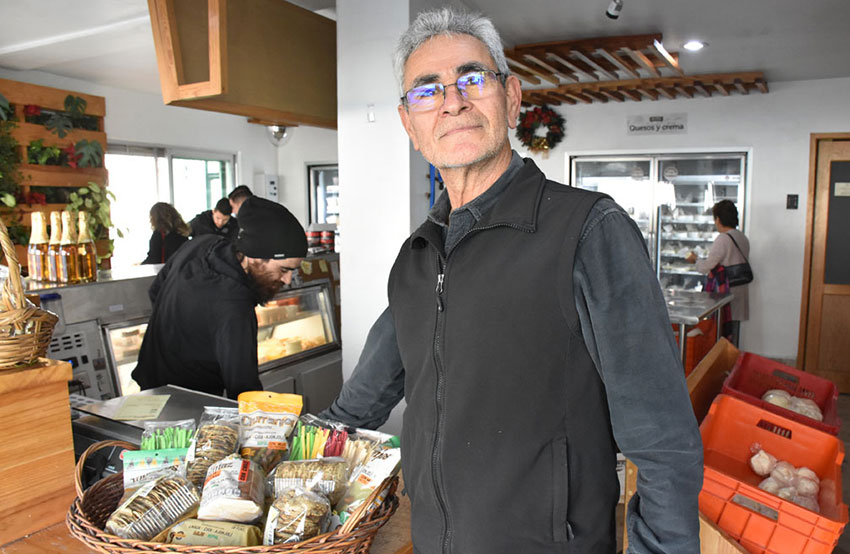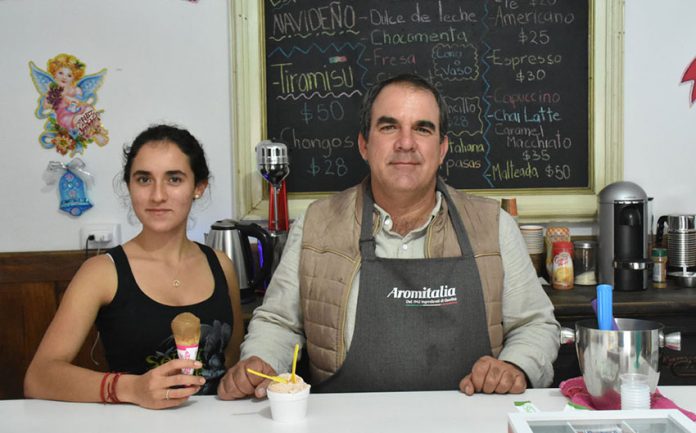Like cafes all over Mexico, everybody seems to know everybody in the cafes in Chipilo, Puebla, a small pueblo about 2 1/2 hours from Mexico City and 20 minutes from the city of Puebla.
People greet each other with hugs, kisses and shouts of hello. Conversations tend to be happy and loud. The difference is that in Chipilo the shouts and conversations are often in Italian. That’s because Chipileños, as they’re known, have kept alive the language that they brought over from Italy 138 years ago.
Beginning in the mid-1800s, the Mexican government encouraged Europeans to settle in Mexico, hoping they would help modernize the country’s agriculture. Joining the wave of Italians that decided to seek their fortune in Mexico were 38 families from the Veneto region in northern Italy who made their way to Chipilo on October 2, 1882.
Italians that settled in other pueblos across Mexico eventually assimilated but Chipileños have maintained many of their Italian traditions and their language. And, of course, their cuisine. It can truly be called an Italian pueblo.
Chipileños worked hard, starting farms and dairies in the new land. “When they arrived in Mexico, they did not have money,” said Eduardo Piloni Stefanonni, the director of Chipilo’s Casa d’Italia. “They did not speak Spanish and it took a long time to establish a community. There was only work … they did not have time for anything else.”

The dairies prospered and the pueblo eventually became famous for its cheeses and other dairy products.
Samuél Rosales Galeazzi took over a cheese store 12 years ago and today stocks it with a variety of Italian delicacies and cheeses — both classic Mexican, like Oaxaca cheese and panela, and Italian cheeses like provolone and mozzarella. He said that his cheeses are different from those found in other pueblos. “The milk here is different,” he said. “It is less acidic.”
Across the street from Galeazzi’s store is a gelato shop owned by Santos Zanella Galeazzi and his daughter Romina Zanella Pérez. “We use a family recipe,” said Zanella Pérez. “It is all artisanal, 100% natural and all made by hand using Italian techniques.”
When I mentioned it was the best ice cream I’d ever tasted she gently corrected me. “It is not ice cream,” she said, “it is Italian gelato.” As I left the store Zuri Merlo, who has served as my guide in Chipilo, said, “The secret ingredient is the cream. It is Chipileño.”
Of course, no Italian pueblo would be complete without restaurants serving honest-to-goodness Italian food. I’ve lived in Mexico for a year and a half and, as much as I love Mexican food, being Italian-American I missed my pasta.
As you might expect, Chipilo gives visitors many options. I’ve eaten at The Gondala (which is a little outside the pueblo) and Bella Pizza and they’re both excellent but I tend to gravitate towards Paolo’s Restaurante, which is on Avenida Cinco de Mayo, Chipilo’s main street, just across from the church.
It may be my favorite spot because on my second trip to Chipilo, as I sipped a delicious coffee in Caffé Italiano, Paolo noticed me and said, “You are Italian, right?” This was unusual. I usually get “You are an American” or “You are a gringo.”
When I answered that I was, in fact, Italian, he gave me a big hug. When I learned he owned a restaurant just two doors down, I had to eat there. After the meal, which was terrific, he asked me a second question. “Do you like wine?”
“Of course,” I replied. He ducked into a back room and handed me a bottle. “A gift,” he told me.
Although Chipileños still hold tight to their Italian roots, the pueblo is changing. There are now more carpentry shops than dairy farms. “My grandfather had cows but my father no,” said Jorge Merlo Piloni, who owns one of the pueblo’s many carpentry shops.
“I worked with cows but my family never had them. In the future, the identity of the pueblo will be furniture, not cows. The price for milk hasn’t gone up, but the price of food for the cows, yes. It is more difficult to sustain the business.”
Furniture made in Chipilo is now sold in several European countries and in the U.S.
Chipileños have maintained their language and traditions for more than a century and a walk through the streets clearly shows it’s an Italian pueblo: Italian flags painted on poles, signs on stores in Italian, the Venetian dialect in the cafés and restaurants.
But when Pedro Bronca Mazzocco was asked whether he felt he was Italian or Mexican, he echoed what all Chipileños believe. “I’m Mexican,” he asserted. “I’m proud to be Italian but I was born in Mexico and I’m Mexican.”
Joseph Sorrentino is a frequent contributor to Mexico News Daily. He lives in San Gregorio Atlapulco, Mexico City.
